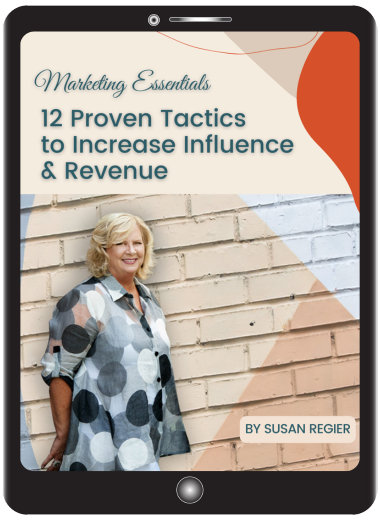Susan Regier’s Blog
Marketing strategies that work!
Sometimes the Smartest Growth Strategy Is to Stop Holding On

What I Learned After 28 Years in Business About Trusting Myself & Letting Go
When I celebrated my 22nd business anniversary, I wrote about 6 Lessons I Learned as an Entrepreneur for More Freedom, Happiness & Success. Looking back now, I realize those lessons still hold true, but they all lead to one deeper truth:
Every breakthrough I’ve experienced came when I finally trusted myself.
Trusted my voice.
Trusted my intuition.
Trusted that I can let go of what no longer fits—even when it once worked beautifully.
This past year, that lesson was tested in a big way. I took a hard look at my offers—the programs, packages, and systems I’d built over the years—and admitted that some no longer reflected who I am now. They no longer excited me, and if I didn’t feel the same passion I once did, how could I expect anyone else to be excited to purchase them?
Some programs I updated with new content and delivery formats—easy peasy. But I also realized it was time to blow up a few programs that had served me well over the years. Letting go reminded me of the early coaching days, when it was common to see business owners “clear the shelves” on old digital products. They’d offer deep discounts, limited-time bundles, or “final call” sales, even though those products weren’t taking up any physical shelf space.
For me, it was a simple (and quiet) deletion. No sales. No fanfare. Just a clear decision to release what no longer fits.
It wasn’t easy. It meant walking away from ideas I’d poured my energy into, adjusting pricing and structure, and leaning into new directions that felt more in tune with how I want to serve today.
But once I gave myself permission to trust my instincts, everything started to click again. My work feels lighter. The clients I’m attracting now are more aligned with my values and vision. And there’s a renewed sense of freedom—the kind that comes from knowing I’m building my business my way.
I also took the same advice I give my clients and raised my rates—something I hadn’t done in far too long. (When was the last time you raised yours?) With the new structure of my programs, I’m delivering a significant increase in value, so it made abundant sense.
Whether you’re leading a team, running your own business, or creating your next offer, I hope this reminder helps:
You can refine, evolve, and even rebuild—and still succeed—when you trust yourself enough to follow what feels right.
So yes, the six lessons I shared years ago still stand. But they’ve distilled into one guiding principle that continues to shape every part of my business and life:
Trust yourself. You already know more than you think you do.
It’s amazing what happens when you stop trying to fit into an old version of success and start trusting the one you’re meant to grow into.
If you’d like to read the original post, you can find it here: https://susanregier.com/6-lessons-i-learned-as-an-entrepreneur-for-more-freedom-happiness-success/
Want To Use This Article On Your Ezine/Blog/Site?
You're welcome to share this article. When you do, please include this complete blurb with it:
Susan Regier is a trusted copywriter and business strategist who helps entrepreneurs uncover what sets them apart—and turn it into profit. Want to grow your influence and income? Get her free Marketing Essentials guide at SusanRegier.com.


